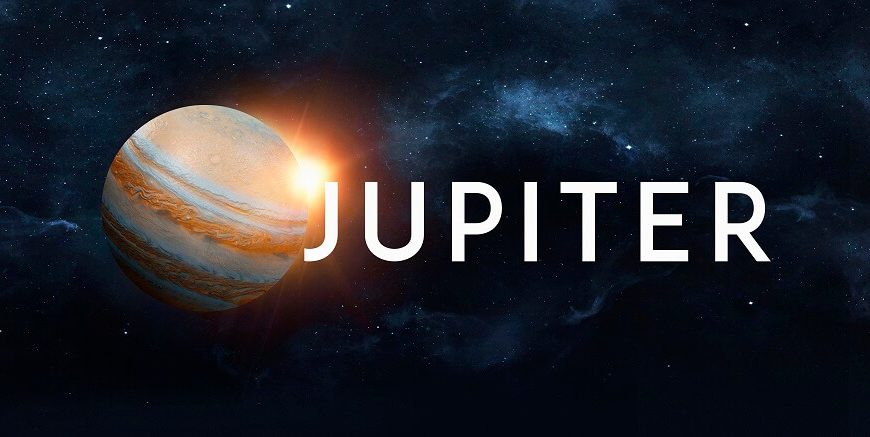The king of planets, Jupiter, is the fifth planet in the solar system. Here are some Jupiter facts for kids if you want to learn more about the planet. In the solar system, it is the largest planet. It is mostly composed of the same gasses that make up stars, including the Sun. Additionally, it has one of the fastest rotation rates of any planet and, like Saturn, has rings. Keep reading our page if astronomy fascinates you and you want to learn fascinating facts about Jupiter. Your kids will be fascinated by these Jupiter facts and develop an interest in learning about planets.
30 Interesting Facts About Jupiter:
Below is a collection of several fascinating and entertaining Jupiter-related facts:
- King Of Gods: Jupiter is appropriately called after the ancient Roman deity ruler because of its enormous size.
- Different Names Of Jupiter: Jupiter was known to the ancient Babylonians as Marduk, who served as the city of Babylon’s protector deity. Its name in Greek mythology was Phaethon, which translates to “flaming star.” Jupiter was known to the Germanic tribes as Thor or Donar.
- Largest Planet: With a diameter that is around 317 times that of the Earth, Jupiter is the largest planet in the solar system. The planet can accommodate more than 11 Earths. Jupiter is still around 2.5 times more prominent even when the mass of the solar system as a whole is added together! Amazing, isn’t it?
- Location In The Solar System: The fifth planet from the Sun, Jupiter, is situated in the outer part of our solar system.
- Weighing On Jupiter: Ever consider how much you would weigh if you were to go to Jupiter? Compared to Earth, Jupiter has 2.4 times higher gravity. On Jupiter, you would weigh 240 pounds if you weighed 100 pounds on Earth.
- The Protector Of The Planet Earth: Rogue asteroids and comets that could otherwise strike Earth or other inner planets and destroy them are drawn to Jupiter by its strong gravity. We are grateful, Jupiter!
- Jupiter As A Slingshot: For space exploration, we lack the power to launch spacecraft into the outer solar system. Therefore, in order to launch spacecraft towards the outer solar system, scientists employ Jupiter’s gravitational pull as a powerful slingshot.
- Slower Time: Time moves more slowly on Jupiter because of its powerful gravity. Therefore, each second on Jupiter is around 20 nanoseconds shorter than on Earth.
- A Gas Giant: Though its size is well known, did you realize that Jupiter is primarily composed of gasses? The major gasses that makeup Jupiter are hydrogen and helium. The most giant planet has just whirling glasses and liquids for a surface.
- Possibility Of Life On Jupiter: Jupiter is not a favorable place for life to exist since it is a gaseous planet with an ill-defined surface. Sorry, fellas!
- A Day On Jupiter: We are all aware that one rotation of the Earth’s axis takes approximately 24 hours. But did you know that Jupiter is the planet with the fastest rotation in our solar system? Jupiter makes one spin in slightly under 10 hours on Earth! As a result, Jupiter possesses the solar system’s shortest day of all the planets.
- The Shape Of Jupiter: The planet has an oblate spheroid spherical form. Jupiter’s rapid spin has caused a bulge to form close to its equator. Jupiter’s oblate spheroid form is a result of this.
- Jupiter’s Year: Jupiter makes one orbit around the Sun in approximately 11.86 Earth years.
- Far Away From The Sun: The average distance between Jupiter and the Sun is 778 million km. This is equivalent to 5.2 times the distance between the Sun and the Earth.
- Sunlight On Jupiter: Sunlight reaches Earth in 8 minutes and 30 seconds, while it takes 43 minutes and 20 seconds to reach Jupiter! That’s longer by more than five times!
- Tug Of War With The Sun: Due to Jupiter’s relative size and mass, the Sun and its center of mass, also known as the barycenter, are drawn closer to one another by the planet’s gravitational attraction. This implies that Jupiter technically does not circle the Sun because it is the only planet in the solar system with a barycenter that is located outside of the Sun’s surface.
- Owner Of Many Moons: Jupiter has 79 moons, but Earth only has one. Of these, 53 have names, while the remaining 26 are yet unnamed.
- Discovery Of Galilean Moons: Io, Ganymede, Callisto, and Europa were the first four moons of Jupiter to be found in 1610 by astronomer Galileo Galilei. The four moons were allegedly seen five weeks before Galileo by a different astronomer by the name of Simon Marcus, who did not publish his results. Although the four moons of Jupiter are known as Galilean moons, astronomer Simon Marcus is credited with giving them their names. The three groupings of Jupiter’s moons are as follows.
- Inner Moons: The inner moons are Metis, Adrastea, Amalthea, and Thebe because they are nearest to Jupiter.
- Largest Moons: The four biggest moons of Jupiter— Io, Europa, Ganymede, and Callisto— are together referred to as the Galilean Moons.
- Outer Moons: They are farther away from Jupiter and smaller. These moons have erratic orbital patterns, and many of them were formed when asteroids were captured.
- The Largest Moon: The biggest moon in the solar system, Ganymede, is orbiting Jupiter and is much bigger than Mercury!
- The Volcanic Moon: Saturn’s moon The solar system’s most volcanically active planet is Io. Large telescopes on Earth are able to glimpse some of its miles-high volcanoes. This volcanic activity prevents it from supporting life as we know it.
- The Most Cratered Moon: Jupiter’s second-largest moon is called Callisto. It has the most craters compared to other celestial bodies in our solar system.
- The Moon With A Hope Of Life: The majority of Europa’s surface is made up of frozen water. There is evidence that suggests a body of liquid water or slushy ice may exist beneath this. Additionally, they discovered water vapor above its surface. Europa could be how humans find extraterrestrial life. exciting, yes?
- Interactions Of The Galilean Moons With Jupiter: There are interactions between three of the four Galilean moons. Europa completes two circles around Jupiter for each time Ganymede orbits the planet, and the lava-filled Io completes four.
- Irregular Moons Of Jupiter: Based on comparable orbital components, the four groups of Jupiter’s outer moons are distinguished. The groups are the Pasiphae group, the Carme group, the Ananke group, and the Himalia group. Not included in the four groupings are moons like Themisto and Carpo.
- The Rings Of Jupiter: You must have noticed Saturn’s ring system in the images of our solar system. However, did you know that Jupiter also possesses rings? There are three primary components to Jupiter’s very faint ring system, which is made up of rock and dust fragments. Saturn has frosty, pristine rings. The gossamer Amalthea and Thebe rings, as well as the main ring and the halo ring, are the names of the rings. The Jovian Rings System refers to this set of Jupiter’s rings.
- Creation Of Jupiter’s Rings: The inner moons of Jupiter are what are responsible for the formation of its rings. The main ring of Jupiter was generated by dust from Metis and Adrastea, while Amalthea and Thebe moons’ dust made up the gossamer rings.
- Largest Ocean: The biggest ocean in the solar system, which is formed of liquid metallic hydrogen, is found on Jupiter.
Visit EuroKids for more such blogs!















